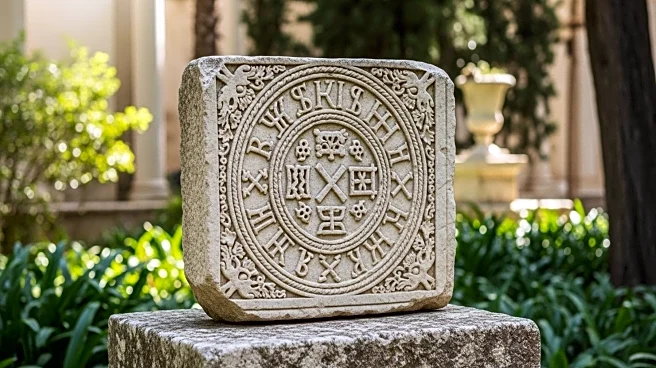What is the story about?
What's Happening?
A New Orleans couple, Daniella Santoro and Aaron Lorenz, discovered an ancient Roman grave marker in their yard, sparking efforts to repatriate the artifact to Italy. The grave marker, dedicated to a Roman sailor named Sextus Congenius Verus, was identified by Tulane University anthropologist Santoro and her colleagues. The stone, believed to have been missing from the Civitavecchia museum in Italy, was handed over to the FBI's art crime team for repatriation. The discovery has led to investigations into how the relic ended up in New Orleans, with theories suggesting it may have been brought over after World War II.
Why It's Important?
The discovery of the Roman grave marker in New Orleans highlights the complexities of cultural heritage and the importance of repatriating artifacts to their countries of origin. This event underscores the need for international cooperation in preserving historical artifacts and preventing illicit trade. The involvement of the FBI's art crime team signifies the seriousness of the issue and the commitment to returning cultural property. The case also raises awareness about the historical connections between the U.S. and Italy, particularly during and after World War II.
What's Next?
The repatriation process will continue as the FBI works to return the grave marker to Italy. The Civitavecchia museum staff is preparing to celebrate the return of the artifact, which will be displayed once again. Further investigations may be conducted to trace the artifact's journey to New Orleans, potentially involving the examination of military records and antique sales from the post-war period. The case may prompt discussions on improving regulations and monitoring of cultural artifacts to prevent similar occurrences in the future.
Beyond the Headlines
This discovery sheds light on the ethical considerations surrounding the ownership and trade of cultural artifacts. It raises questions about the responsibilities of private individuals and institutions in preserving historical items and the role of governments in facilitating repatriation. The event may influence future policies on cultural heritage protection and encourage more rigorous enforcement of international agreements on artifact repatriation.
AI Generated Content
Do you find this article useful?

















